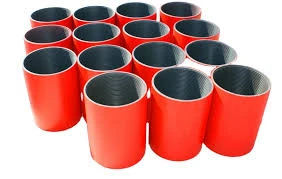- Afrikaans
- Albanian
- Amharic
- Arabic
- Armenian
- Azerbaijani
- Basque
- Belarusian
- Bengali
- Bosnian
- Bulgarian
- Catalan
- Cebuano
- Corsican
- Croatian
- Czech
- Danish
- Dutch
- English
- Esperanto
- Estonian
- Finnish
- French
- Frisian
- Galician
- Georgian
- German
- Greek
- Gujarati
- Haitian Creole
- hausa
- hawaiian
- Hebrew
- Hindi
- Miao
- Hungarian
- Icelandic
- igbo
- Indonesian
- irish
- Italian
- Japanese
- Javanese
- Kannada
- kazakh
- Khmer
- Rwandese
- Korean
- Kurdish
- Kyrgyz
- Lao
- Latin
- Latvian
- Lithuanian
- Luxembourgish
- Macedonian
- Malgashi
- Malay
- Malayalam
- Maltese
- Maori
- Marathi
- Mongolian
- Myanmar
- Nepali
- Norwegian
- Norwegian
- Occitan
- Pashto
- Persian
- Polish
- Portuguese
- Punjabi
- Romanian
- Russian
- Samoan
- Scottish Gaelic
- Serbian
- Sesotho
- Shona
- Sindhi
- Sinhala
- Slovak
- Slovenian
- Somali
- Spanish
- Sundanese
- Swahili
- Swedish
- Tagalog
- Tajik
- Tamil
- Tatar
- Telugu
- Thai
- Turkish
- Turkmen
- Ukrainian
- Urdu
- Uighur
- Uzbek
- Vietnamese
- Welsh
- Bantu
- Yiddish
- Yoruba
- Zulu
tubing and casing
Tubing and Casing Essential Components of Oil and Gas Wells
The oil and gas industry relies heavily on the integrity and functionality of its wells, and two critical components in this context are tubing and casing. Both are essential for the safe and efficient extraction of hydrocarbons from underground reservoirs, but they serve distinct functions and are composed of different materials.
Understanding Casing
Casing refers to the series of steel pipes that are installed in the wellbore to provide structural support, prevent the collapse of the well, and isolate the various geological formations that the well passes through. The casing protects the well from contamination and allows for safe pressure containment during drilling and production operations. It is usually cemented into place to secure its position and create a barrier to prevent any fluids from migrating between formations.
Casing comes in several sizes and types, including surface casing, intermediate casing, and production casing. Each type is chosen based on the specific requirements of the well, which are influenced by factors such as the depth of the well, the geological conditions, and the expected pressures and temperatures. The surface casing, for instance, is typically installed first to protect groundwater resources and provide a foundation for the drilling operation, while the production casing is designed to allow hydrocarbons to flow to the surface.
The Role of Tubing
Once the casing has been installed, tubing is inserted through the production casing to facilitate the flow of oil or gas to the surface. Tubing is a smaller diameter pipe that is specifically designed to handle the pressure and temperature conditions of the production environment. It is usually made from high-strength steel or alloy materials that can withstand corrosive fluids and minimize the risk of failure.
tubing and casing

The primary function of tubing is to serve as the conduit for produced fluids. It allows for efficient fluid flow from the reservoir to the surface while also accommodating any pressure and temperature variations. Tubing is typically installed in sections, known as tubing strings, which can be extended or replaced depending on the production requirements. This modularity gives operators flexibility in managing their wells over time.
The Importance of Selection and Installation
The selection and installation of both casing and tubing are critical to the longevity and reliability of oil and gas wells. Engineers must consider various factors, including mechanical properties, corrosion resistance, and thermal conductivity, when choosing materials. In addition, proper installation is vital to ensure that both tubing and casing are sealed effectively to prevent leakages, which can pose safety hazards and environmental risks.
Technological advancements have greatly improved the materials and processes involved in casing and tubing installation. For instance, modern well technologies now incorporate advanced cementing techniques and real-time monitoring systems that enhance the overall integrity and performance of the well.
Conclusion
In conclusion, tubing and casing are fundamental components of oil and gas extraction, each playing a pivotal role in the successful operation of wells. Casing provides the necessary structural integrity and protection against external elements, while tubing facilitates the efficient transport of hydrocarbons to the surface. The careful selection and installation of these components are essential for ensuring safety, efficiency, and environmental compliance in oil and gas operations. As the industry continues to evolve, ongoing advancements in technology and materials will further enhance the effectiveness of tubing and casing, paving the way for more sustainable oil and gas production in the future.
-
Tubing Pup Joints: Essential Components for Oil and Gas OperationsNewsJul.10,2025
-
Pup Joints: Essential Components for Reliable Drilling OperationsNewsJul.10,2025
-
Pipe Couplings: Connecting Your World EfficientlyNewsJul.10,2025
-
Mastering Oilfield Operations with Quality Tubing and CasingNewsJul.10,2025
-
High-Quality Casing Couplings for Every NeedNewsJul.10,2025
-
Boost Your Drilling Efficiency with Premium Crossover Tools & Seating NipplesNewsJul.10,2025







